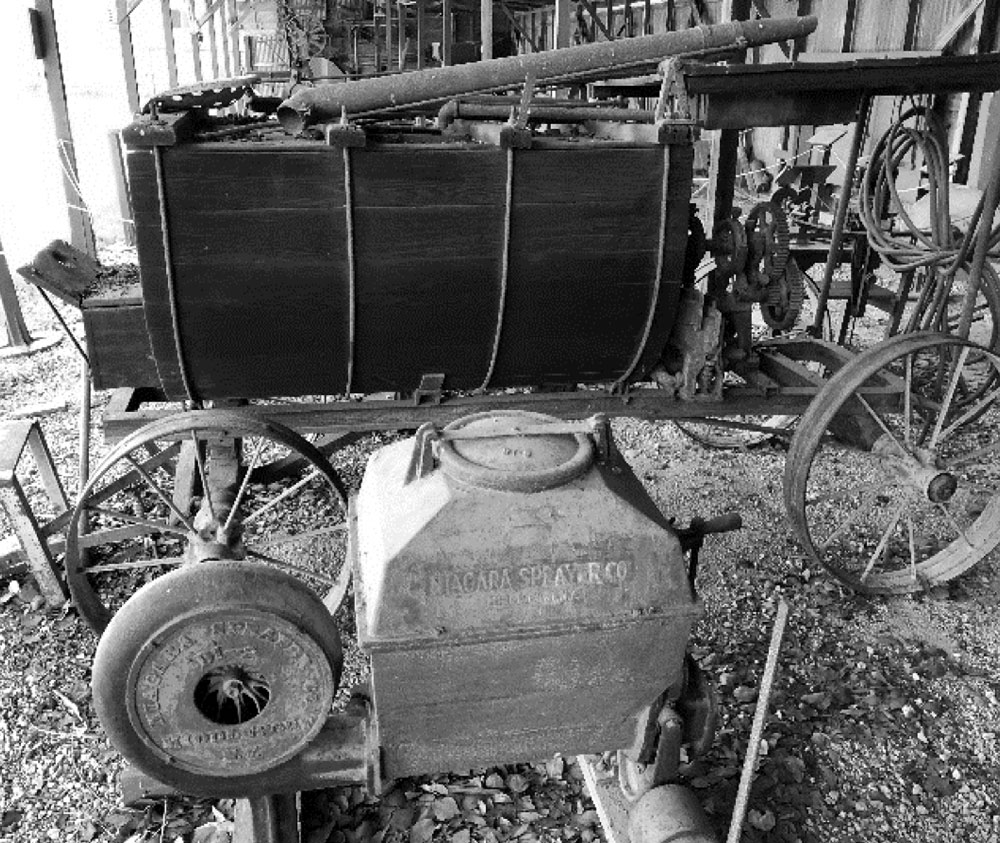Sprayers
Every step of the crop cultivation process is important. Water is essential to help crops grow. Fertilizer helps crops grow larger. Weed and pest control help protect the crops so that they can continue to thrive.
Before machinery was developed, watering, fertilizing and spraying the crops with pesticides (chemicals designed to destroy insects, animals or other organisms harmful to cultivated plants) was done by hand. Long hoses and/or irrigation lines tethered to bins containing gallons of water carried the water to wherever the farmer determined it was needed. Chemicals designed to improve crop performance demanded similar labor-intensive applications by farmers on foot.
Agricultural sprayers are among the more recent agricultural machines developed. They were designed in the mid-twentieth century to supply water to fields and crops. They also enabled broadcasting of liquid fertilization and pest control.
Sprayers range in size from portable units (typically backpacks with spray guns) to trailed sprayers that are connected to a tractor, to self-propelled units similar to tractors with boom mounts, with capabilities for spot-spraying machines by small machines to extensive land and plant coverage by very large sprayers.

250-gallon Bean Spray rig, Niagra Sprayer Co.